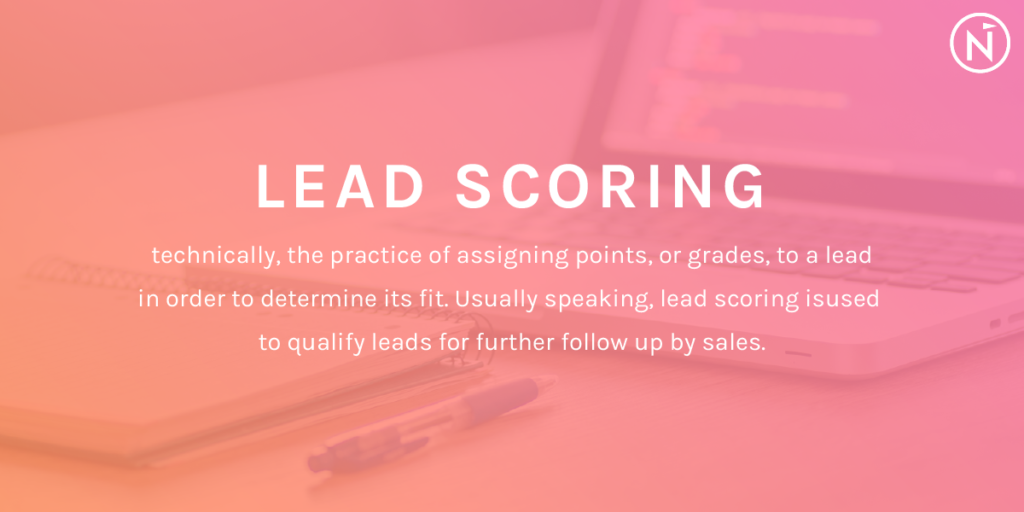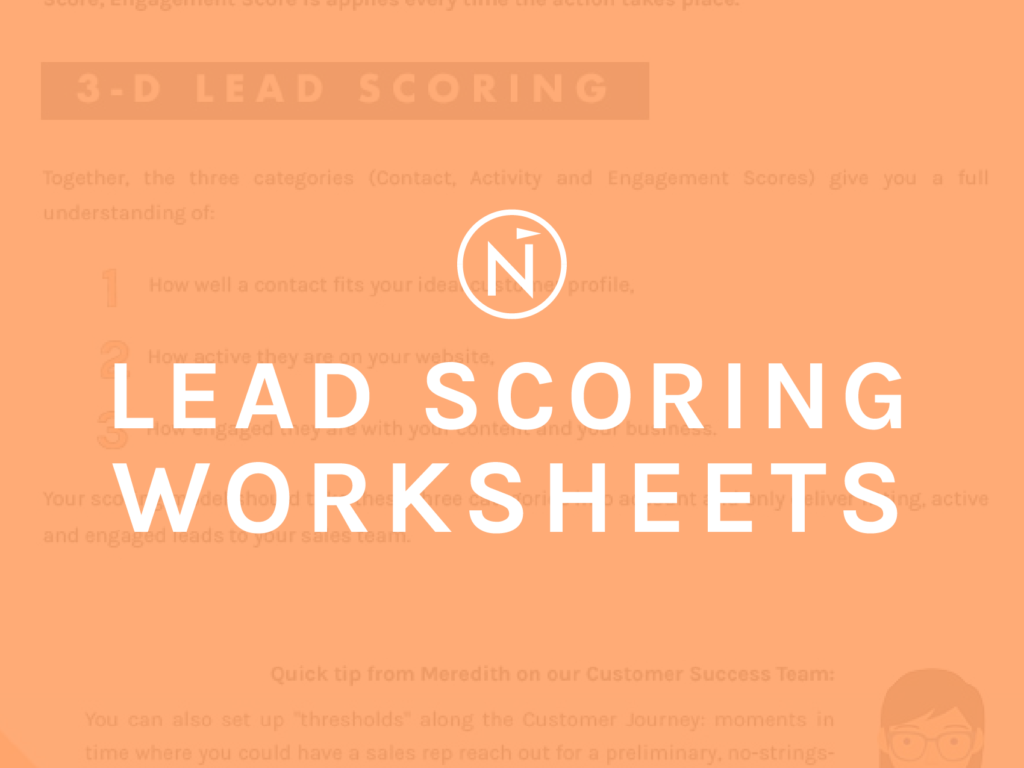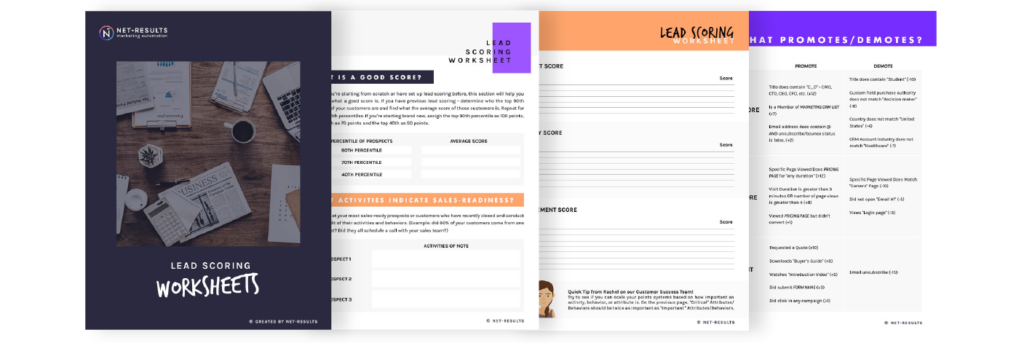B2B Lead Scoring can be an incredibly effective tool when implemented and managed well — and we’re here to tell you all about how to make that your reality!
What is B2B Lead Scoring?

Want easy definitions of more Marketing Automation Terms?
Check out the Net-Results Marketing Automation Glossary Blog Post.
Lead Scoring helps produce higher quality leads in a multiple ways including:
- Automating the process of lead qualification in the Marketing-Sales handoff, allowing more time for crafting the right message for the right people
- Highlighting key steps in the Customer Journey
- Providing a detailed profile of potential customers
A great Lead Scoring model helps to get the right leads to sales! As you create clarity about the type of leads your sales team wants, you’ll be able to attribute points to lead characteristics, activities, and behaviors. Verbalizing and implementing those key aspects into a model like lead scoring then allows automatic and recurring tracking, creating a better flow of information between your Sales and Marketing teams!
But it can be kind of tricky when starting from scratch and making sure your Lead Scoring Strategy aligns with your higher marketing goals and marketing strategy.
B2B Lead Scoring Rule #1: Identify Key Attributes, Activities, and Behaviors.
This is the best groundwork for any effective Lead Scoring Model — first, identify the key attributes, activities, and behaviors of your best customers and hottest leads.
How does one go about this? Here are some questions to ask yourself to get started — if you don’t already have these answers poke around your CRM, your Marketing Automation Platform, and see what you find!
- Which channels or pieces of content contributed to acquiring your current customers?
- What are the general steps your current customers took to become customers? Did they visit your we
- What demographic and firmographic points align best with your marketing strategy?
- Based on your earlier assessment of your marketing processes, how would you need to change your lead scoring model to improve said processes?
And then from there, you can prioritize! We recommend finding the 90th percentile of your customers and using them as a basis for 100 points; break down their behaviors, downloads, site visits, and attributes to be around 100 points. Then the 70th percentile of your customers? Try to make their attributes, activities, and behaviors to be 70 points, and so on by 10 percentile points all the way down through your customer base.
If you’re looking for in-depth worksheets to help you create a 3D B2B Lead Scoring Model, look no further than our Lead Scoring Worksheets! These worksheets will help you:
- Create, develop, and hone your lead scoring strategy
- Identify the attributes, behaviors, and activities that determine sales-readiness in your funnel
- Understand lead scoring front to back with clear instructions and real-life examples

Rule #2: Always collaborate with your Sales team.
Once you have your list of key B2B Lead Scoring Key Attributes, Activities, and Behaviors, make sure to involve your Sales team in the process of developing your Lead Scoring Overlay, or multiple Overlays if that’s what your operations require!
A great place to start is to consider how the Sales staff handles Leads once they are handed off from the Marketing Team. Sales usually has a really great idea of what really makes a Sales Qualified Lead versus a Marketing Qualified Lead, and what behaviors, attributes, and activities show true sales-readiness in their eyes.
For example, does one Account Executive handle all of the leads in a certain business size because they close them the best? Does that one Account Executive have certain key things that they look for that help to qualify a Contact? Does coming from a certain channel, like Google Ads, usually mean that a Lead is “better-qualified”? Assign more points for aspects that have lead to more revenue generation.
You can even create multiple overlays — as many as your organization needs to be able to make a process that saves time, prioritizes leads, and creates better Sales-Marketing communication.
Rule #3: Update your Lead Scoring Overlay Regularly!
Just like anything else in marketing automation, Lead Scoring is not a one-off exercise. After you’ve set it up, it’s best to continually evaluate the relevance of what you’re chosen and adjust your scoring model accordingly.
Did you launch a new lead magnet that’s shown to contribute to Leads better than any you’ve ever launched? Hire a new sales representative who is killing it in a certain vertical meaning that this vertical is emerging as more sales-ready? All of those emerging trends should be worked into your B2B Lead Scoring Overlays in order to make sure that your processes are functioning in the absolute best way they can to help you reach your goals.
Note that lead scoring is most effective when you have a greater volume of leads than sales is comfortable with. In other words: sales would like better-qualified leads instead of just more leads.
Hope these three simple rules for creating a B2B Lead Scoring overlay have helped you gain clarity about how Lead Scoring can help your organization!
Don’t forget to get your free Lead Scoring Worksheets below!

Until next time!
Sarah Augustinsky
Marketing at Net-Results

